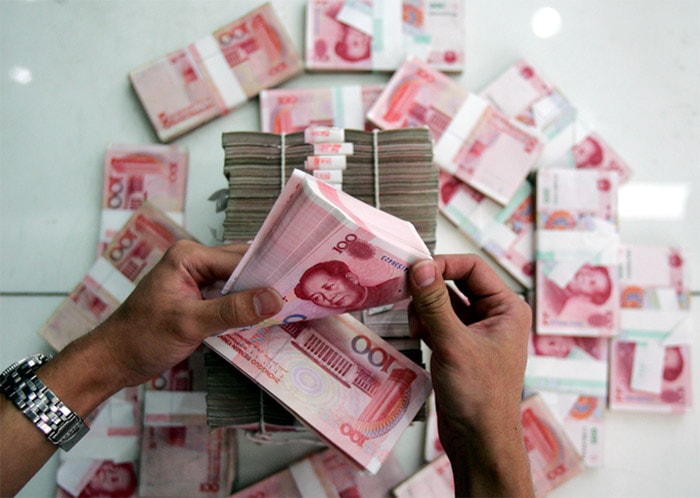China has long tried to strengthen the yuan to limit its economic dependence on the United States.

Brazil is the main exporter of soybeans to China - Photo: AFP
Taking advantage of its trade advantage, China is now pushing to include the yuan in payments with major trading partners, building the currency's strength to challenge the dominance of the US dollar.
The yuan is dominant in some countries.
As China's 10th-largest trading partner and a major supplier of iron ore and soybeans, Brazil has begun accepting trade and investment payments in yuan, with an agreement reached between central banks in February.
By the end of 2022, the yuan had surpassed the euro to become the second most traded foreign exchange currency in Brazil, accounting for 5.37%. While the US dollar remains the main foreign exchange in Brazil, it is showing signs of decline.
According to data from Bloomberg, in February and March 2023, the yuan officially surpassed the US dollar to become the main currency traded in Russia, in the context of a year of war in Ukraine, and Russia is facing many sanctions from the US and the West.
Before the Ukraine war, the amount of yuan transactions in Russia was negligible.
According to SCMP, Chinese leaders are actively "lobbying" to make the yuan the currency in crude oil transactions with Middle Eastern countries, directly challenging the concept of petrodollar - a payment system that exchanges oil for US dollars between oil exporting countries and countries importing this commodity.
Beijing is also promoting the use of the yuan in foreign exchange and financial transactions among member countries of the Association of Southeast Asian Nations (ASEAN) - the region that is currently China's largest trading partner.
China has reached a number of yuan payment agreements with countries such as Indonesia, Vietnam, and Cambodia.
"In the short term, de-dollarization reflects cracks in the international monetary system dominated by this currency in the current geopolitical context," SCMP quoted an analysis in a research paper published on April 3 by two authors Huang Yadong and Zhang Wenlang in collaboration with China's leading investment bank CICC.
Lots of room
The current global usage of the renminbi remains modest. It accounts for only 2.19% of global payments; 3.5% of foreign exchange transactions; 2.69% of central bank reserves, and 12.28% of the International Monetary Fund's (IMF) Special Drawing Rights basket.

The yuan has a lot of room to grow, as China is the world's largest exporter of goods - Photo: GETTY IMAGES
However, many people believe that the yuan has a lot of room to grow, as China is the world's largest exporter of goods, with 18% of the global economy depending on it.
Over the years, China has reported double-digit increases in yuan-denominated transactions and investments worldwide.
About 7.92 trillion yuan ($1.15 trillion) worth of goods trade was settled in yuan in 2022, up 37.3% from 2021, according to China's Ministry of Commerce.
RMB payments related to direct investment increased 16.6% year-on-year in 2021 to 6.76 trillion yuan in 2022.
In a major report released in October 2022, Beijing said it would continue to internationalize the yuan in an orderly manner.
According to Tuoi Tre